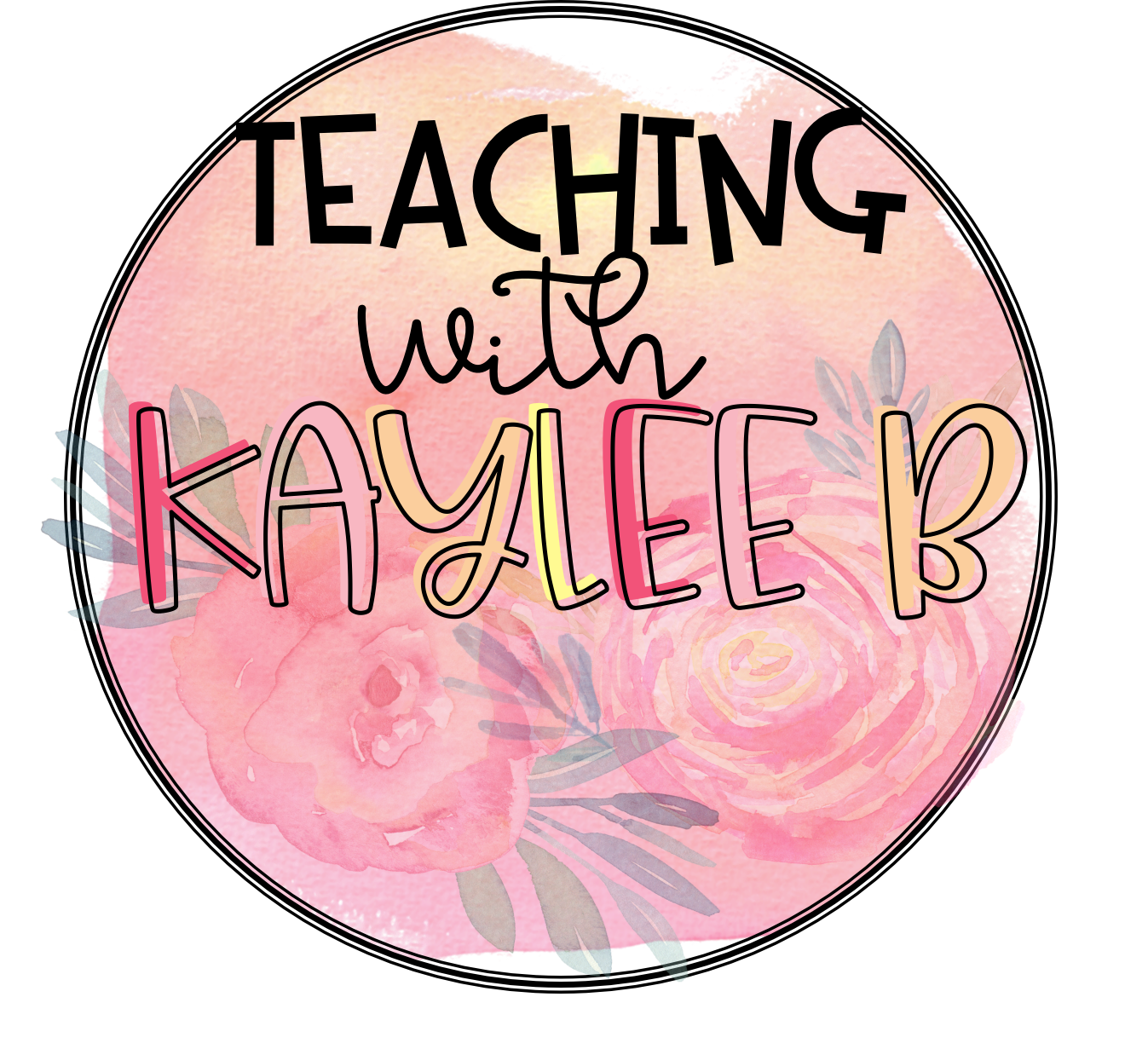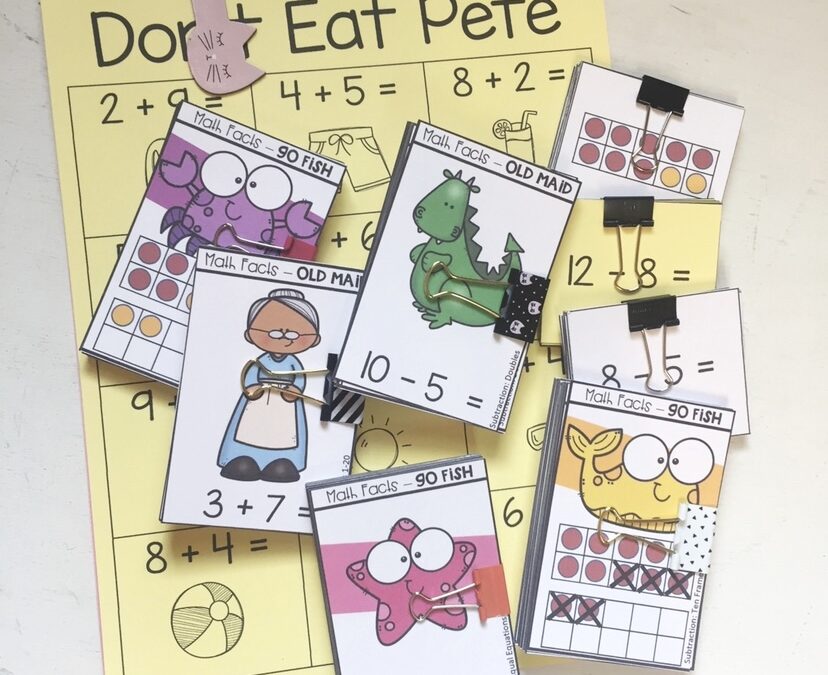You may have noticed that if you just have students practice timed tests with math facts that it gets really repetitive and boring for students. That is the very reason I started doing a 10 minute daily math center time in my classroom. So today I thought I would share 5 ideas for math centers that will increase math fact fluency. These ideas are perfect for 1st grade and 2nd grade teachers because I will be focusing on ideas for math centers that deal with addition and subtraction facts.
Ideas for Math Centers
You heard me right, these ideas for math centers only take 10 minutes a day! I have 5 activities and students just go to one a day. At the end of the week, they have gone to all 5. This also makes it really easy to plan and prep for because it’s only 5 activities a week rather than a day. So let’s look into the 5 ideas for math centers you can use as your rotations.
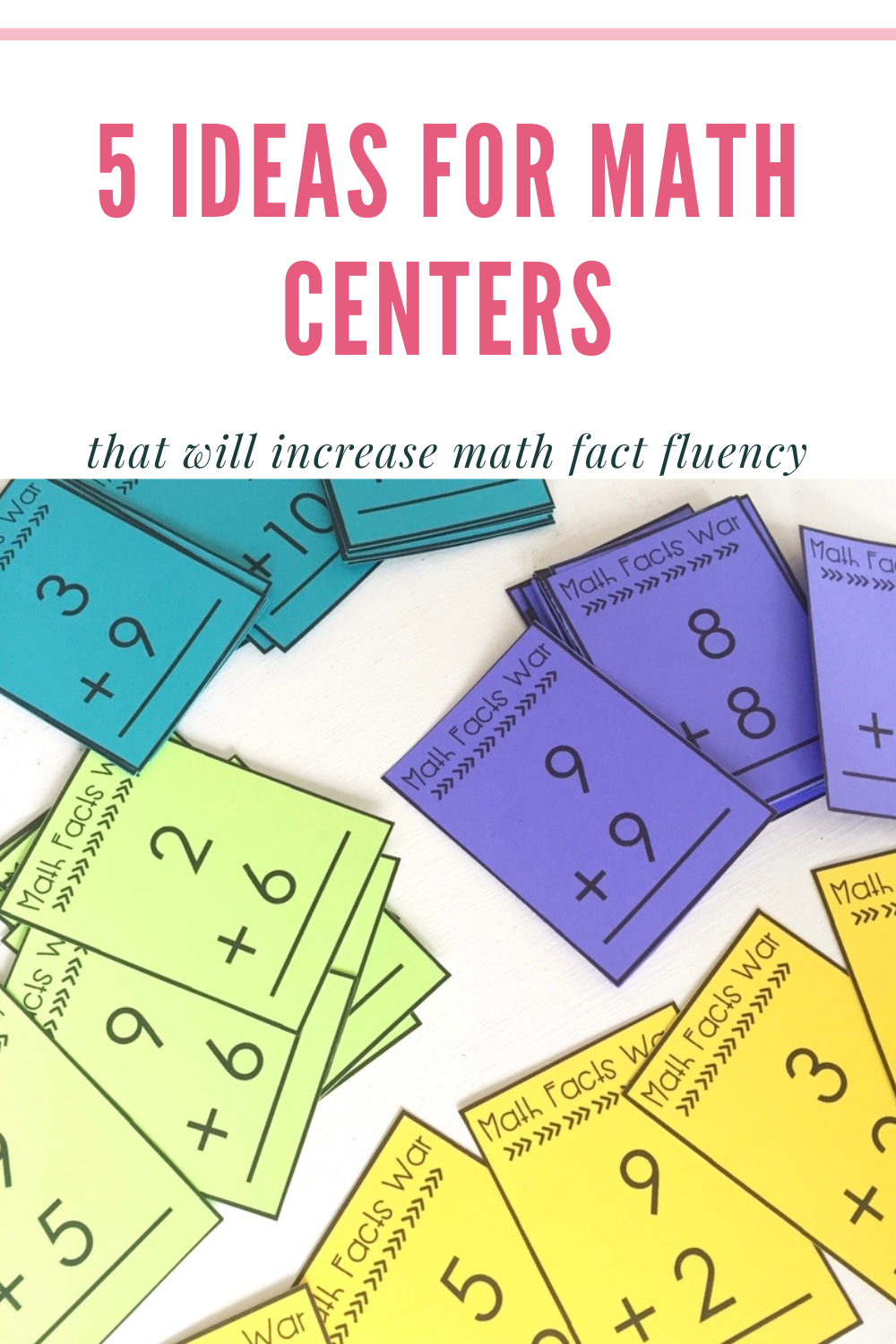
I like to keep things consistent and as a routine in my classroom. So I always have a group playing a math fact game, a group doing task cards, a group doing worksheets, a group using technology like an ipad or a computer, and a small instruction group where students are working with me.
Let’s dive into each one of these groups individually.
Games
Math Fact games are a great way to engage students when practicing math facts. It doesn’t have to be boring worksheets all the time. These can be tactile games where you incorporate materials like popsicle sticks or milk jug cups. But I’ve found my students’ favorite math center games are basic card games that I’ve included math facts in.
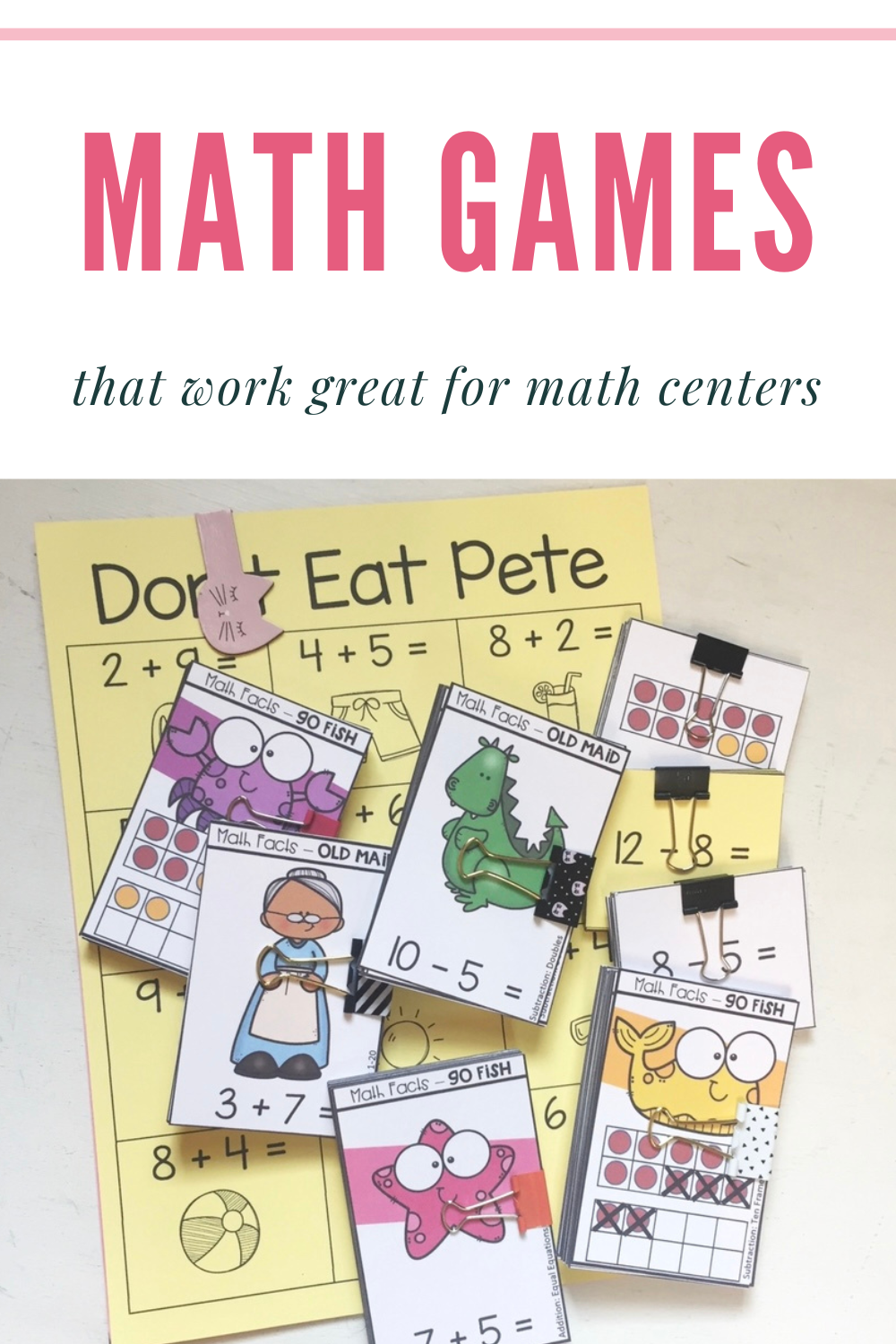
One week I’ll set out Math Facts War, another week I’ll set out Math Facts Go Fish, after that I’ll set out Math Facts Old Maid. Students laugh and have fun as they are playing and practice math fact fluency all at the same time. They also enjoy Math Fact Board Games and Memory Match games. Find all the math fact games I set out in a money saving bundle here. I learn more about the math fact games I use read this blog post here: Games With Math Facts That Students Love
Task Cards
When teaching my students how to solve math facts, I like to give them tools they can use whenever they need. That way when they come across a fact that they forget the answer to, they can find the answer no matter what. This is why I teach math fact strategies to my students. These are both counting strategies and reasoning strategies. But don’t expect to teach these strategies once and have students using them all the time. They need practice with them and that is exactly why I have this math fact center.
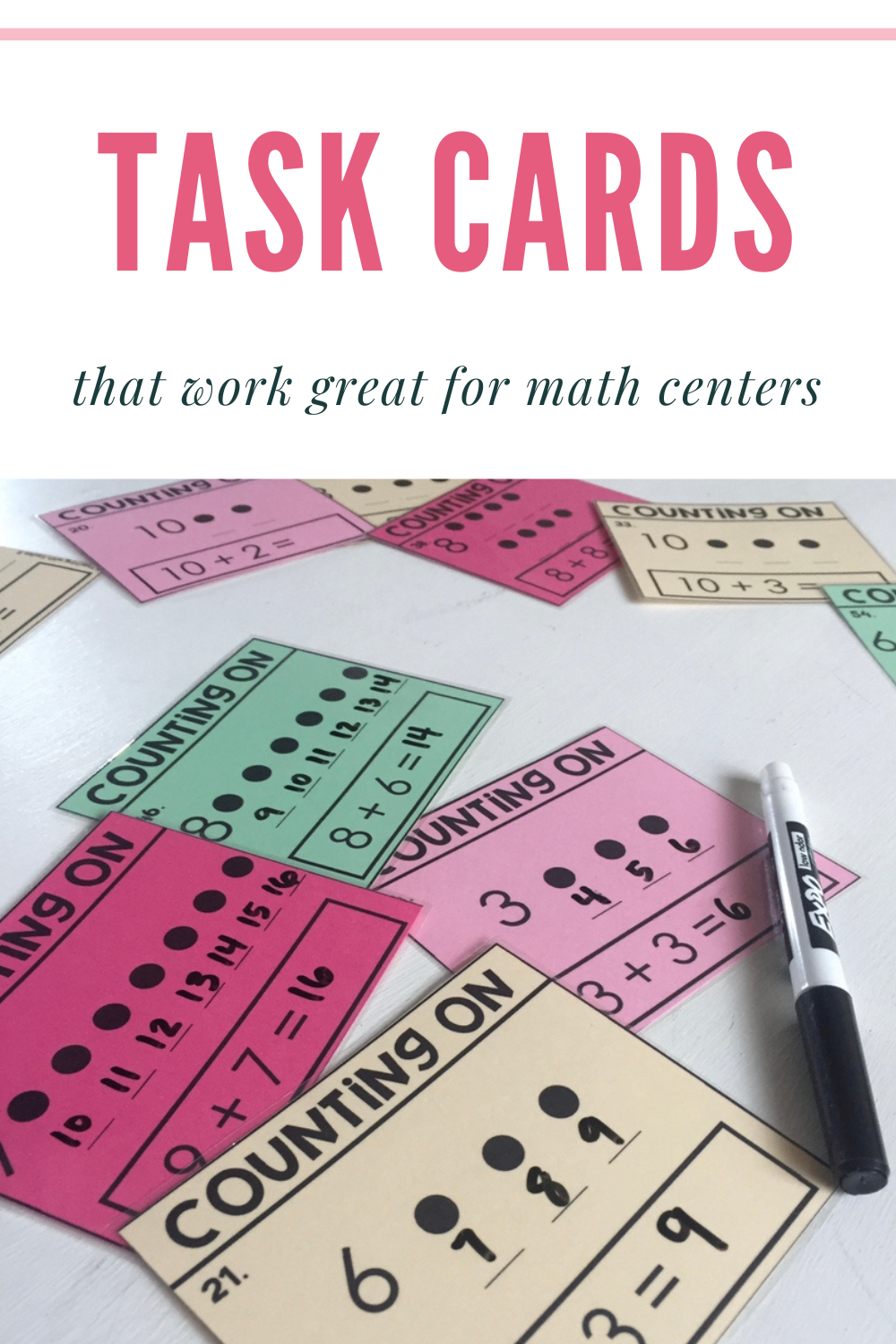
I have students complete task cards where they practice each strategy. I teach all of the strategies at the beginning of the year, so this is a great review for students. One week I set out task cards that help use a number line, then counting on strategy, then I set out task cards for the counting back strategy, then I’ll move to them using doubles facts, and then the make ten strategy. Find all these task cards in this money saving bundle here. To learn more about each math fact strategy and how to teach them, check out this blog post here: Math Fact Strategies That Work
Worksheets
When it comes to math center worksheets, you can’t just set out boring old worksheets that only have math facts on them. You have to set out worksheets that are engaging for students. They need some sort of game or activity along with the math facts. Then students will be engaged in this math center and you won’t have behavior problems. I love having a center with math center worksheets because it is low prep for me. I just print them out and they are ready to go for students. I’ll share more about my go to math center worksheets below.
Technology
In this center, I’ll have students either get on computers or tablets. Many schools and districts pay for some sort of online math program for teachers to use. I really enjoyed Reflex Math when our school bought it for us. Students would just log on and practice math facts. If your school doesn’t have something like that, you can have them use BOOM cards. They are like digital task cards. I have some sets that are monthly themed with clipart and have students practicing fact fluency. I also have sets that give practice with each math fact strategy. These digital task cards are self correcting, so students can learn from mistakes without a lot of guidance from you. Find the monthly fluency set here. Find the strategy sets I use here.
Small Group Instruction
In this center you meet with the small group and work on math fact strategies. You can even divide your students based on what stage of math fact strategy they are in. Do they need to use physical materials like blocks or their fingers to find the answer? Or do they use counting strategies not using physical materials? Do they use reasoning strategies but just take a longer time with them? Or do they use reasoning strategies but can get to the answer in 5 seconds for less. Learn more about these stages here in this blog post: The 3 Stages of Math Fact Mastery

Group students according to their needs and then give mini lessons to help them move to the next stage. You can also progress monitor students in this group. Give them timed tests and help them see what facts they need to practice. Find the timed tests I use here. Find the math facts progress monitors I use here.
Math Center Worksheets
Young students love fun facts, so I created math fact worksheets that are riddles. Students solve the math facts and use the key to figure out the fun fact. The fun fact is related to the clipart on the worksheet so it really intrigues students. Students love these! Whenever I set them out, students ask if I have extra ones I can send home with them. Find these Math Fact Riddle worksheets here.
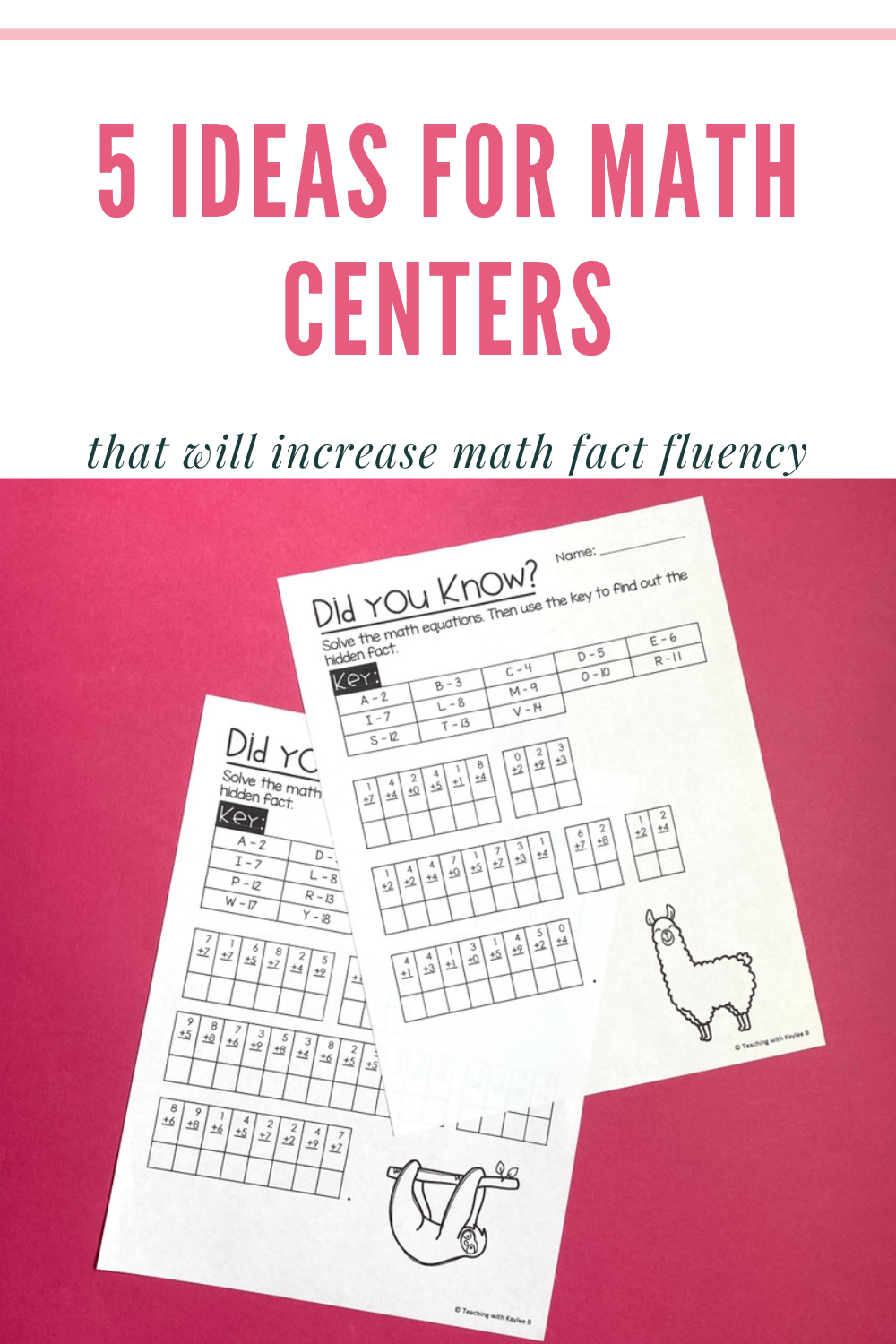
Another favorite is what I call “I Spy Math Fact Worksheets.” Students search through the monthly themed clipart to find certain math facts. For example, one has them looking for math facts that make 10. If the answer is ten, they highlight the fact. When they find a fact that does not equal ten, they write the fact along with the answer on the recording sheet. When they do this they get in a lot of good math fact practice. Once finished, they love to color the fun clipart. Find these I Spy Math Fact Worksheets for the whole year in this money saving bundle here.
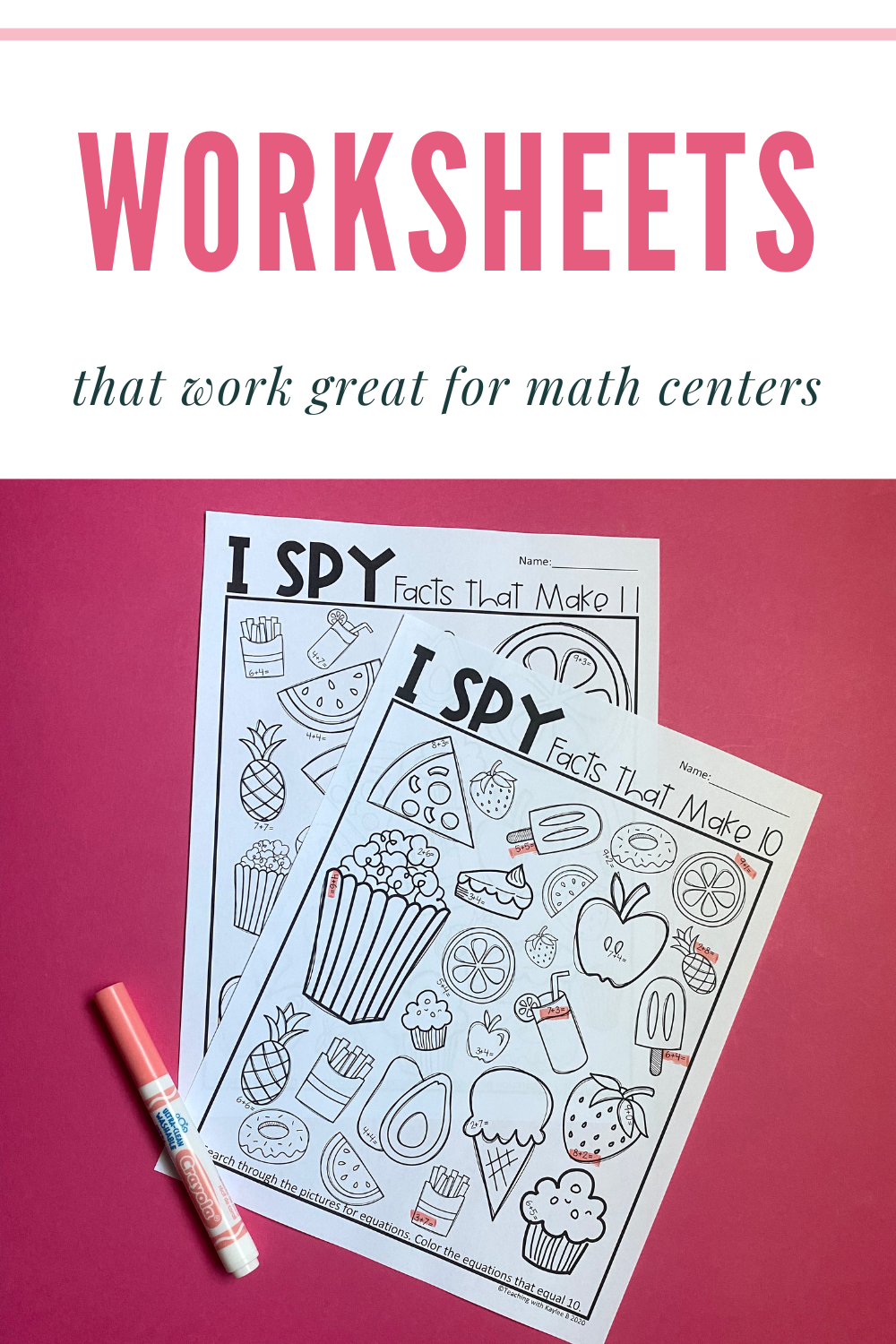
For a free sneak peak of both the riddle worksheets and the I spy worksheets, check out this free resource here.
And the last math fact worksheets I use in my class are worksheets based on math fact strategies. Remember, in order for students to become fluent with addition and subtraction facts, they need both fluency based practice and strategy based practice. These worksheets are a low prep way for you to give students that strategy based practice. Find these in the same resource as the strategies task cards I talked about above. Find them here.
Math Center Rules
For these centers to run smoothly in your classroom, you need some expectations or math center rules. I display these rules and model them to students. When I first introduce them, we even have a class discussion on why these are important. Here are the math center rules I use: work hard, get started quickly, use whisper voices, and ask questions to group members instead of the teacher.
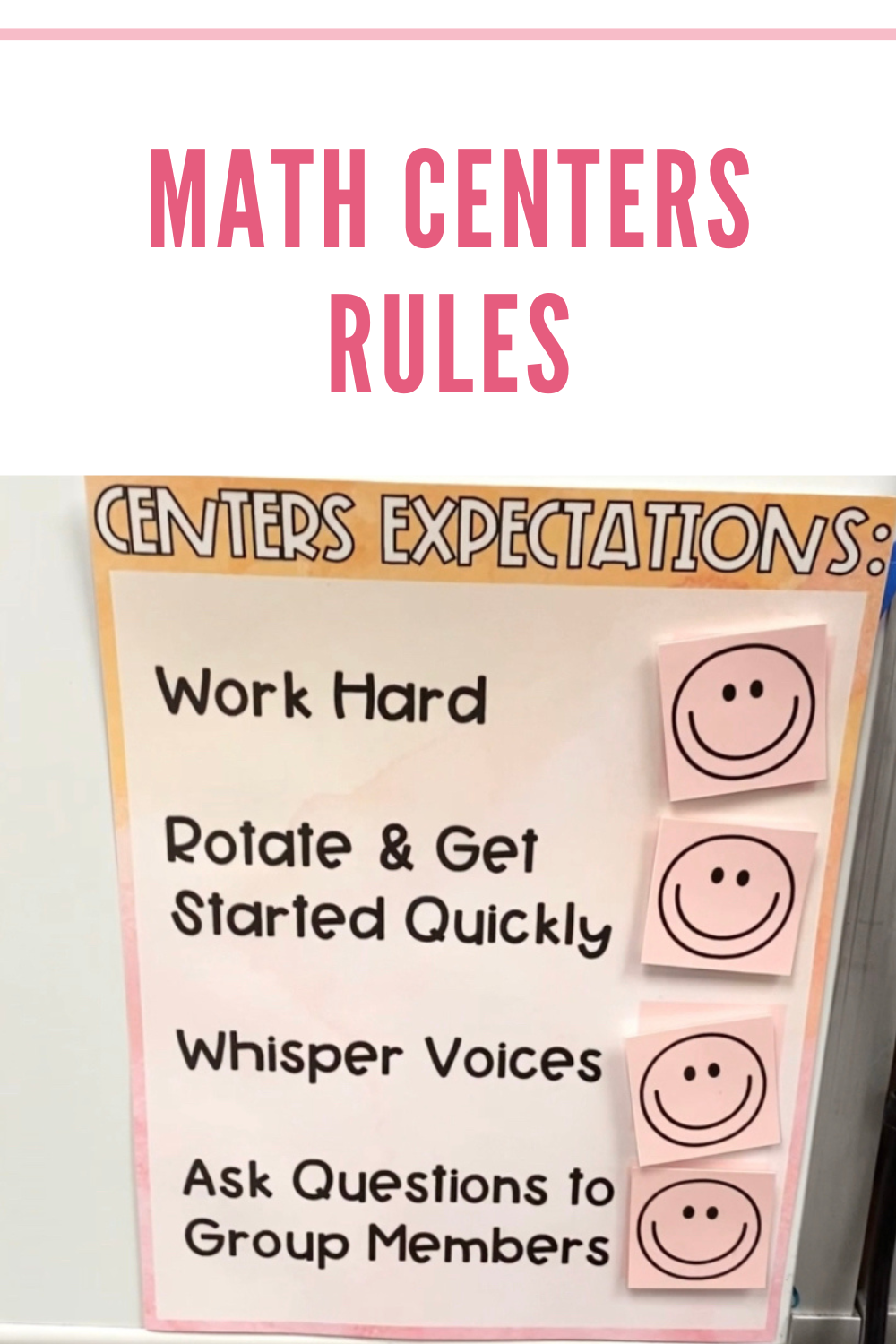
After our math center time, I have students reflect on how they met those expectations. I have cut outs of smiley faces, straight faces, and frowny faces. These have velcro on the back that line up with the page I display our math center rules. If students work hard where I don’t have to remind any students to stay on task, they get a smiley face for that expectation. We review each of the expectations and if students get all the smiley faces they earn a petal towards our whole class rewards system.

Learn more about this system here in this blog post: The Best Whole Class Rewards System Ever!
Find this centers expectations display and this whole class rewards system here.
Also, the best timer I have ever found for centers and basically everything else in my classroom is the Time Timer. It shows how much time students have left to work with a red section. It’s great because it helps students keep on task and they don’t count down because no seconds number is shown.

Find this timer here.
Benefits of Math Centers
These math centers really help students with math fact fluency. They are getting the daily consistently they need with both fluency practice and strategy practice. Students see that math and math fact practice can be fun because they are not being drilled on timed tests every day. You will see your students increase in their number sense because they are not focusing on rote memorization.
They get valuable small group instruction from you to help them understand the concepts they need to become fluent with math facts. And when students become fluent in math facts, it helps them with all other aspects of math. They don’t get caught up on the facts when they are doing higher level math. And the best part about these ideas for math centers is that they only take 10 minutes. It can be a good transition time. Plan your centers right after recess or lunch and students get started on them right away.
I hope these 5 ideas for math centers have shown you how you can easily incorporate quality math fact instruction and practice into your classroom schedule.
For more tips to getting your students to math fact fluency, download my free workbook for 1st and 2nd grade teachers: The 7 Steps to Ensure Math Fact Fluency
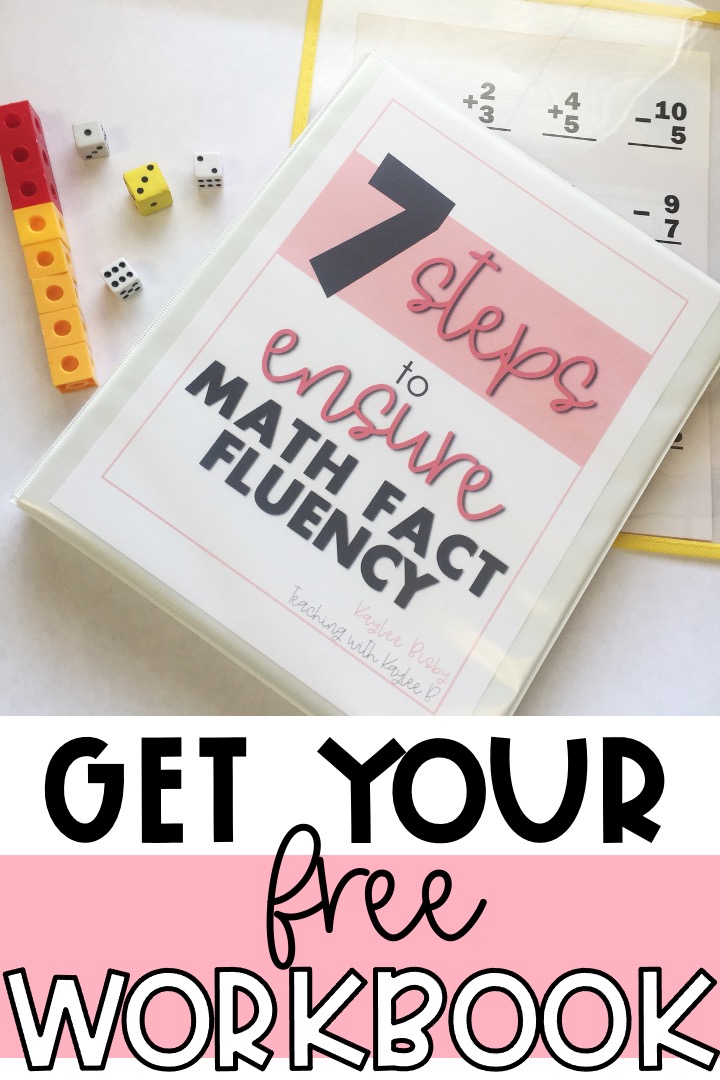
Download your free copy here.
As an Amazon Associate I earn from qualifying purchases.
